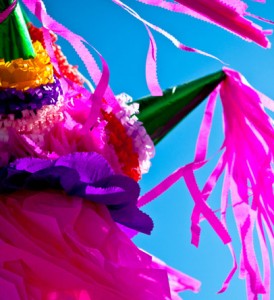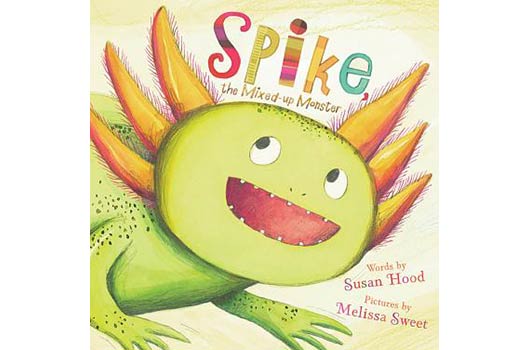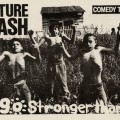 When my daughter was born, I was surprised by the overwhelming—fierce, even!—desire I suddenly felt to raise her in the same manner that I was: immersed in nuestra cultura and filled with Latino pride. As someone who had drifted into a very Anglo, English-only lifestyle, my culture-rich childhood suddenly became the standard by which I wanted to raise my children.
When my daughter was born, I was surprised by the overwhelming—fierce, even!—desire I suddenly felt to raise her in the same manner that I was: immersed in nuestra cultura and filled with Latino pride. As someone who had drifted into a very Anglo, English-only lifestyle, my culture-rich childhood suddenly became the standard by which I wanted to raise my children.
In her study, Marketing to American Latinos, M. Isabel Valdés defines this conscious search for ethnic identity as “retro-acculturation.” And it is a phenomenon that is happening all over the country to second-, third- and fourth-generation Latinos.
As a child, I spent my days attending an English-only school, but my home life was filled with cultural traditions, Spanish language, and authentic Mexican food. Every year, in the days leading up to Christmas, my family made tamales, set up nativity scenes, and attended or hosted posadas. Birthdays were large affairs with piñatas and primos. Spring was spent celebrating Cinco de Mayo by making tissue-paper flowers and watching folklorico dancers on stage.
But these days, I live far away from my family, so teaching my children about their heritage must be a conscious decision on my part. I have to think of ways to share with them their ‘Buelita’s Mexican culture and their Abuelo’s Spanish one.
But why is this so important? Why are so many parents looking back to their roots when it comes time to raise their kids?
Read Related: Puerto Rican Pride and Prejudice
Perhaps, we instinctively know that passing on nuestra cultura is a gift to our children. By teaching them where they came from, we are allowing them to figure out where they want to go.
A study by researchers at the University of North Carolina-Chapel Hill has shown that “Latino adolescents in the U.S. who maintain ties to their culture of origin are more likely to develop healthier behaviors than their peers. Latino adolescents with strong awareness of their family’s culture reported higher self esteem, fewer social problems and less hopelessness, aggression and substance abuse.”
Child and family psychotherapist, Jes Sophia Valle, says that in her work with Latino children she’s noticed that children raised to be bilingual and culturally sensitive help make a family more cohesive.
“A child educated in two cultures, is given an opportunity not only to have an advantage in life, but also in terms of their family dynamics as they grow into teens and adults,” Valle says. “They become more aware of why their parents followed certain traditions, and can then participate—or not—once they are older. They become ‘open minded.’ ”
But she cautions parents about the need for moderation. Going overboard or insisting that all cultural traditions must be observed can actually have the opposite effect. “These methods usually do not allow a child to become well-rounded and most likely the child (when they grow up) will not partake in their culture.”
Cuban-American mother of two, Carla Molina Martins, lives in Rhode Island. She says that teaching her girls about their heritage not only helps to keep traditions alive, but also gives them a sense of connection to something bigger than themselves.
“I know when I tell my [older] daughter a story about her abuelo,” Martins says, “or where we come from in Cuba, she’s rapt with attention, and she’s eager to share it with anyone she meets. And the more I tell the stories, the more she wants to hear them. They become comforting. It gives her a sense of history.”
Martin, whose husband is Portuguese, relies heavily on storytelling and music to pass on the story of their family and their heritage. They also do a lot of cultural learning online.
“There are some things I do very much on purpose, and others just come naturally, as they were taught to me,” she says. “But for the most part, I don’t make any conscious effort to instill pride. I think it’s just a byproduct of growing up in a family with strong roots.”
Lisa Renata, is a Mexican-American married to a man of German-Irish descent. She spends a lot of time working to share her own heritage with her son and daughter. Playing Spanish music, speaking and reading to them in Spanish, and going to local cultural events, are just some of the ways she teaches them about mami’s family and cultura. She also incorporates traditions at home like celebrating el Día de los reyes magos and Día de los muertos. “I think it is important for them to feel pride as a whole—not for just half of who they are.”
Renata feels that sharing these experiences with her children is important because it is a part of who she is—and as a result, a part of who they are.
Like Renata and Martins, I look to traditions, stories, and music to teach my children about their heritage. So in the spring the kids and I get busy making cascarones, the confetti-filled eggs that originated in Mexico and are now popular in the Southwest. In the summer we experiment with making paletas, the fruit-filled version of Popsicles. Fall finds us breaking out our calavera kit to make our own decorated skulls, and cutting up yellow tissue paper to make our own cempasúchiles, the marigolds that are typically associated with Day of the Dead. This year, we’ll be celebrating winter by making our own little set of peregrinos—the figures of Mary and Joseph—so that we can discuss the tradition of la posada, the reenactment of Mary and Joseph seeking shelter in Bethlehem before Christ was born. And in between? We listen to the Gypsy Kings, and we read, read, read!
But the thing I focus on the most is making the whole experience an enjoyable one for myself, as well as my children. That, and taking pride, because as Renata so appropriately sums it up: “The best way I teach them cultural pride is by being proud myself.”











